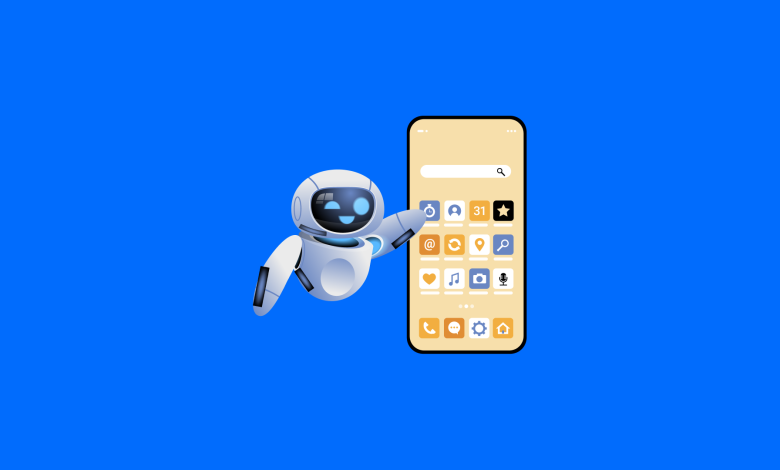Building AI-Powered Mobile Apps: Where to Start

Artificial Intelligence (AI) is no longer limited to research labs and big tech companies. In 2025, AI has become a core feature of modern mobile applications, powering everything from personalized recommendations on e-commerce platforms to voice assistants, chatbots, and image recognition systems.
For developers, the question is no longer “Should I use AI in my app?” but rather “How can I integrate AI effectively?”.
This article provides a roadmap for developers who want to build AI-powered mobile apps, covering essential concepts, tools, frameworks, and best practices.
Why Build AI-Powered Apps?
Personalization
- Recommending products, songs, or videos based on user behavior.
Automation
- Virtual assistants (e.g., Siri, Alexa) that automate daily tasks.
Enhanced User Engagement
- AI-driven gamification, chatbots, or interactive features keep users engaged.
Data-Driven Insights
- AI helps businesses predict user needs and optimize decision-making.
Competitive Edge
- Apps with smart AI features stand out in a crowded marketplace.
Common Use Cases of AI in Mobile Apps
- Natural Language Processing (NLP): Chatbots, voice commands, sentiment analysis.
- Computer Vision: Face recognition, AR filters, barcode scanning.
- Recommendation Engines: Personalized shopping, media playlists.
- Predictive Analytics: Health tracking apps predicting trends.
- Fraud Detection: Banking and fintech apps detecting unusual activity.
- Smart Assistants: Voice-controlled apps, contextual reminders.
Key AI Technologies for Mobile Development
1. Machine Learning (ML)
- Algorithms that learn from data (recommendations, classification).
- Frameworks: TensorFlow Lite, Core ML, PyTorch Mobile.
2. Natural Language Processing (NLP)
- Enables apps to understand and generate human language.
- Libraries: spaCy, Hugging Face Transformers, Dialogflow.
3. Computer Vision
- Recognizes objects, faces, or gestures via camera input.
- Tools: OpenCV, ML Kit (Google), Vision framework (Apple).
4. Edge AI
- Running AI models directly on mobile devices for faster performance.
- Example: TensorFlow Lite, ONNX Runtime.
5. Cloud AI Services
- Offloading AI processing to cloud APIs.
- Providers: Google Cloud AI, AWS AI/ML, Microsoft Azure Cognitive Services.
Steps to Building an AI-Powered Mobile App
Step 1: Define the Use Case
- What problem does AI solve?
- Example: A fitness app that detects exercises using computer vision.
Step 2: Collect and Prepare Data
- Data is the foundation of AI.
- Use existing datasets (ImageNet, COCO, Kaggle) or collect custom data.
- Clean and preprocess data for training.
Step 3: Choose the Right AI Model
- Pre-trained models (fast, cost-effective).
- Custom models (better accuracy for niche use cases).
Step 4: Select the Deployment Approach
- On-device (Edge AI): Faster, private, works offline.
- Cloud-based AI: More powerful, supports complex tasks but requires internet.
Step 5: Integrate AI with the Mobile App
- For iOS: Use Core ML or integrate ONNX models.
- For Android: Use TensorFlow Lite or ML Kit.
- For cross-platform apps: Use Flutter with TensorFlow Lite or React Native plugins.
Step 6: Test and Optimize
- Test AI performance on different devices.
- Optimize models for speed and low memory usage.
Step 7: Monitor and Update
- Continuously update models as new data becomes available.
Challenges in AI-Powered Mobile Apps
Data Privacy & Security
- Use on-device AI to reduce cloud data transfers.
- Handling sensitive data (e.g., health, finance) responsibly.
Performance Limitations
- Mobile devices have limited memory and battery.
- Optimize models (quantization, pruning).
Bias in AI Models
- Poor training data can lead to biased or inaccurate predictions.
- High Development Costs
- AI integration often requires specialized knowledge.
Case Study: AI in E-Commerce App
A retail company integrated AI into its mobile shopping app:
- Recommendation Engine: Suggested products based on browsing history.
- Visual Search: Users uploaded images to find similar products.
- Chatbot: Answered customer queries using NLP.
Results:
- Conversion rates increased by 30%.
- Customer service load decreased by 40%.
Tools and Frameworks for AI in Mobile Development (2025)
- TensorFlow Lite: Lightweight ML models for Android/iOS.
- Core ML (Apple): Optimized for iOS devices.
- ML Kit (Google): Pre-built APIs for text recognition, face detection.
- Hugging Face Transformers: State-of-the-art NLP models.
- Dialogflow: Conversational AI and chatbots.
Future of AI in Mobile Apps
By 2025 and beyond, AI will power:
- Hyper-personalization → Apps predicting user needs before input.
- Context-aware experiences → Apps adapting based on environment and behavior.
- Voice-first interfaces → Moving beyond touchscreens.
- Generative AI apps → Creating text, music, and images on the fly.
Conclusion
AI is no longer a futuristic concept — it’s a necessity in modern mobile applications. From personalization to automation and predictive analytics, AI empowers apps to be smarter, faster, and more engaging.
For developers, the journey starts with defining a clear use case, choosing the right tools, and ensuring performance and privacy are maintained. The best AI-powered apps are those that add real value to users’ lives while being seamless and intuitive.
If you’re building your next mobile app, ask yourself:
👉 How can AI make this experience smarter and more meaningful?

